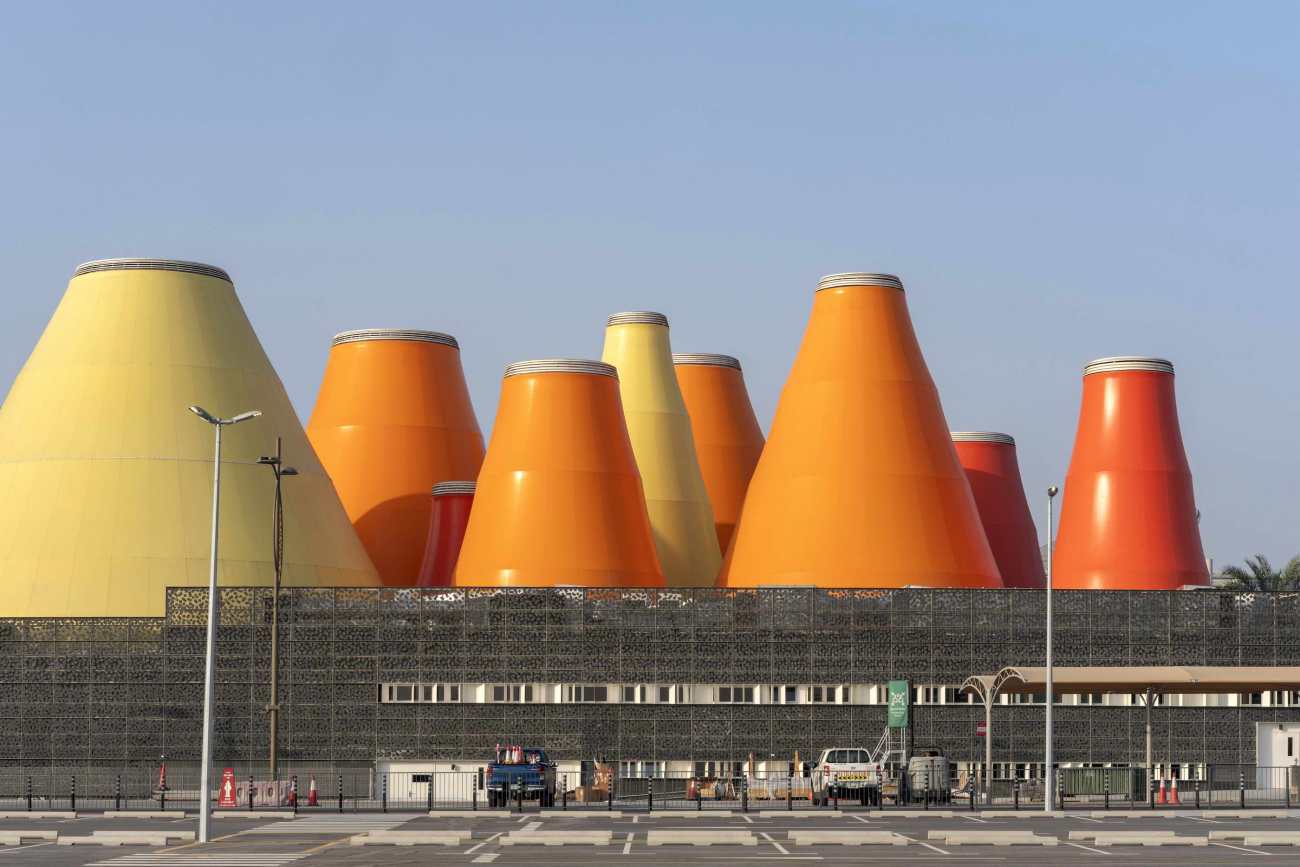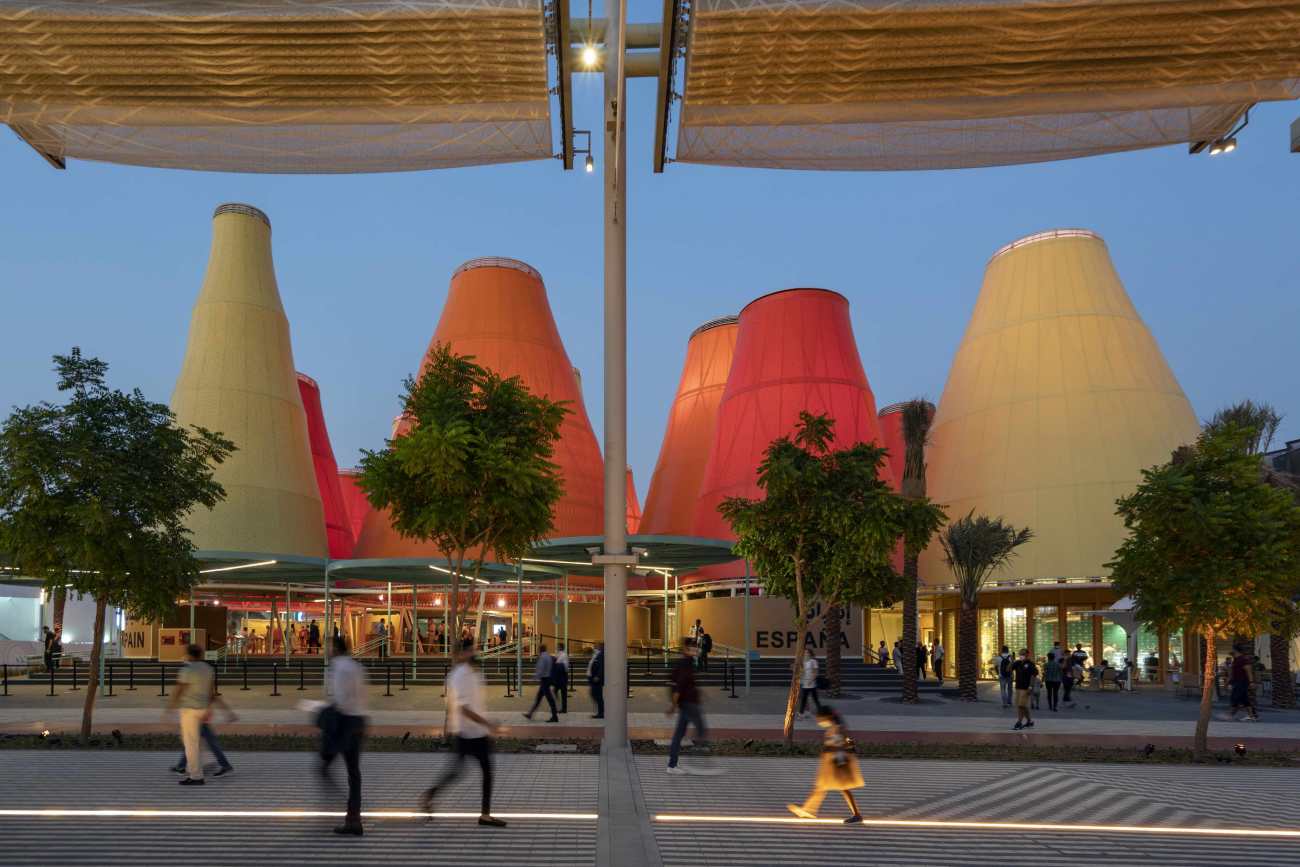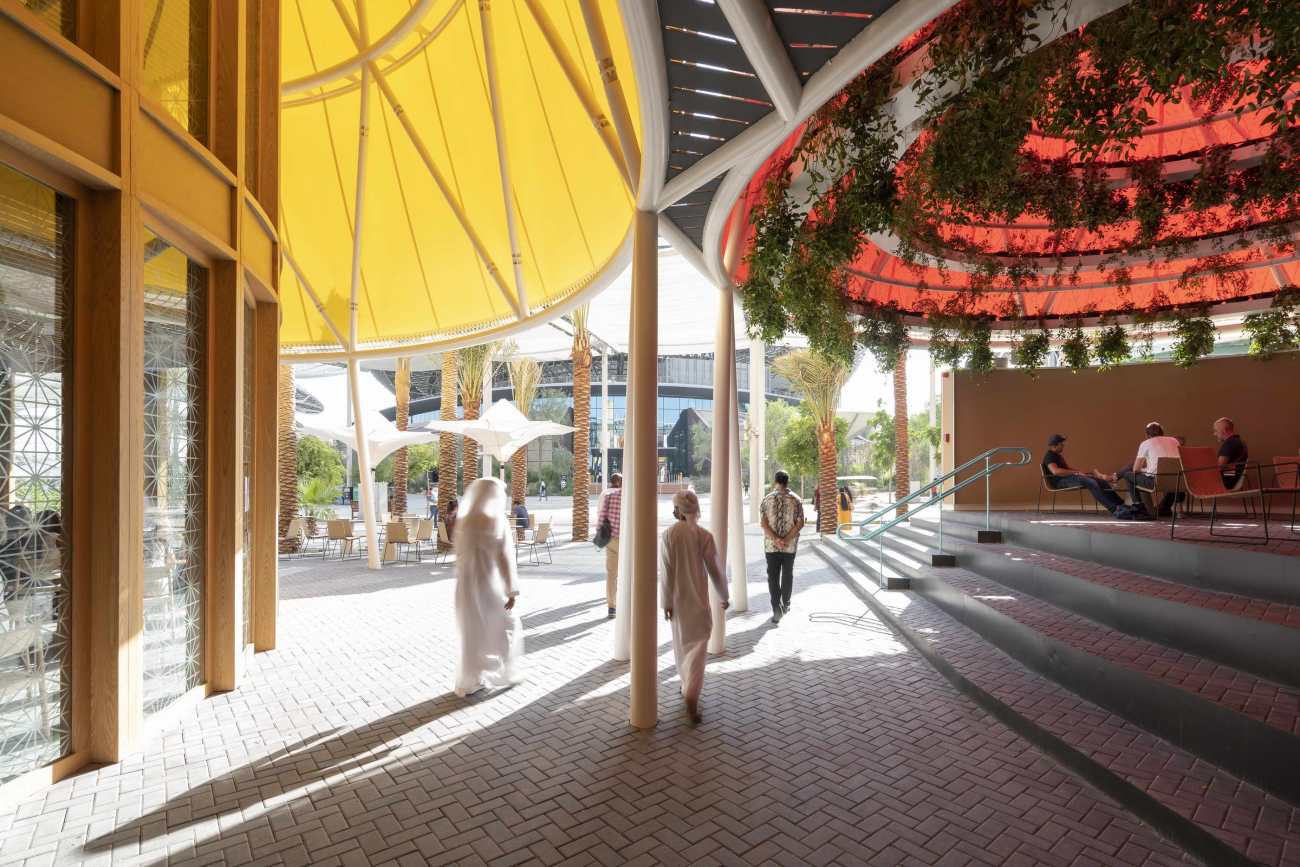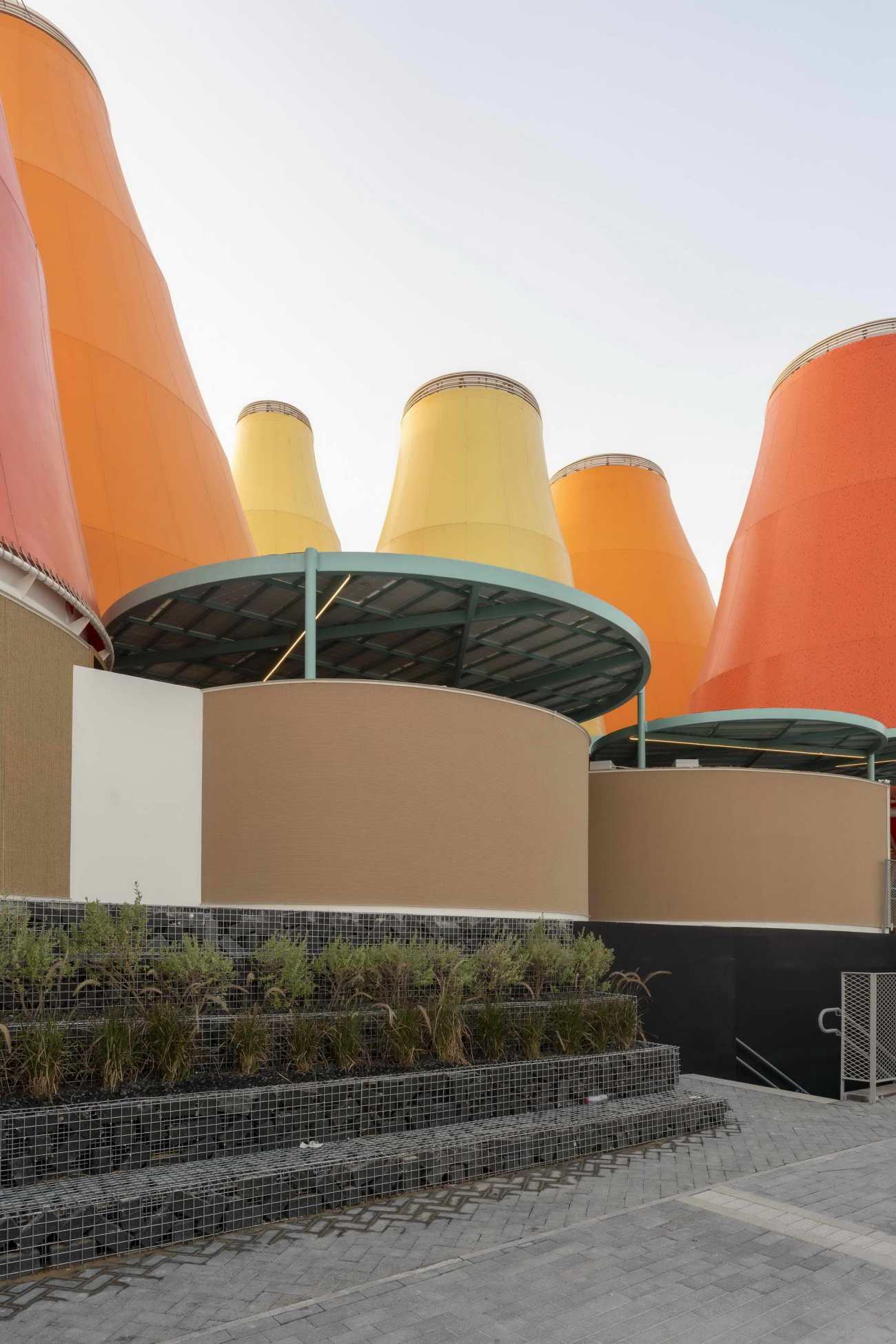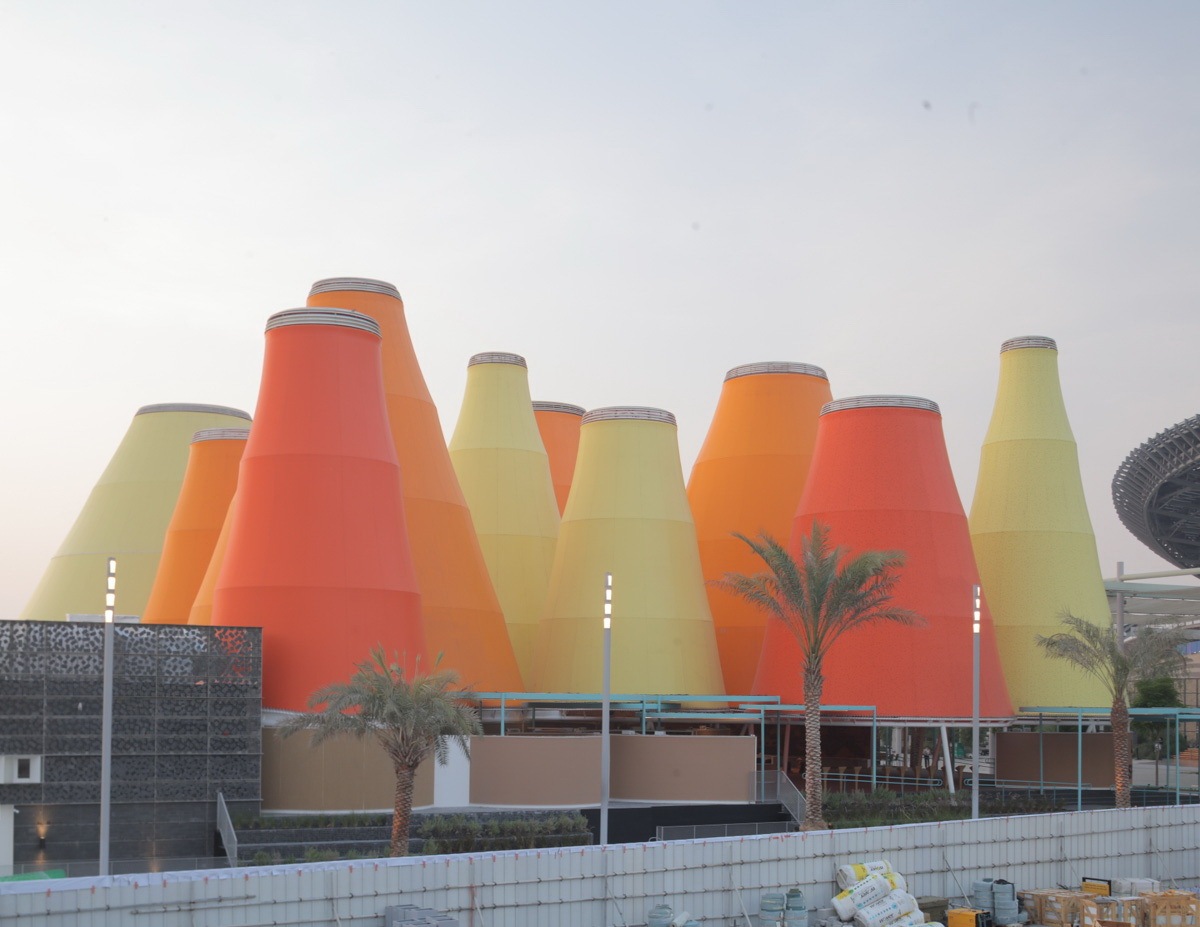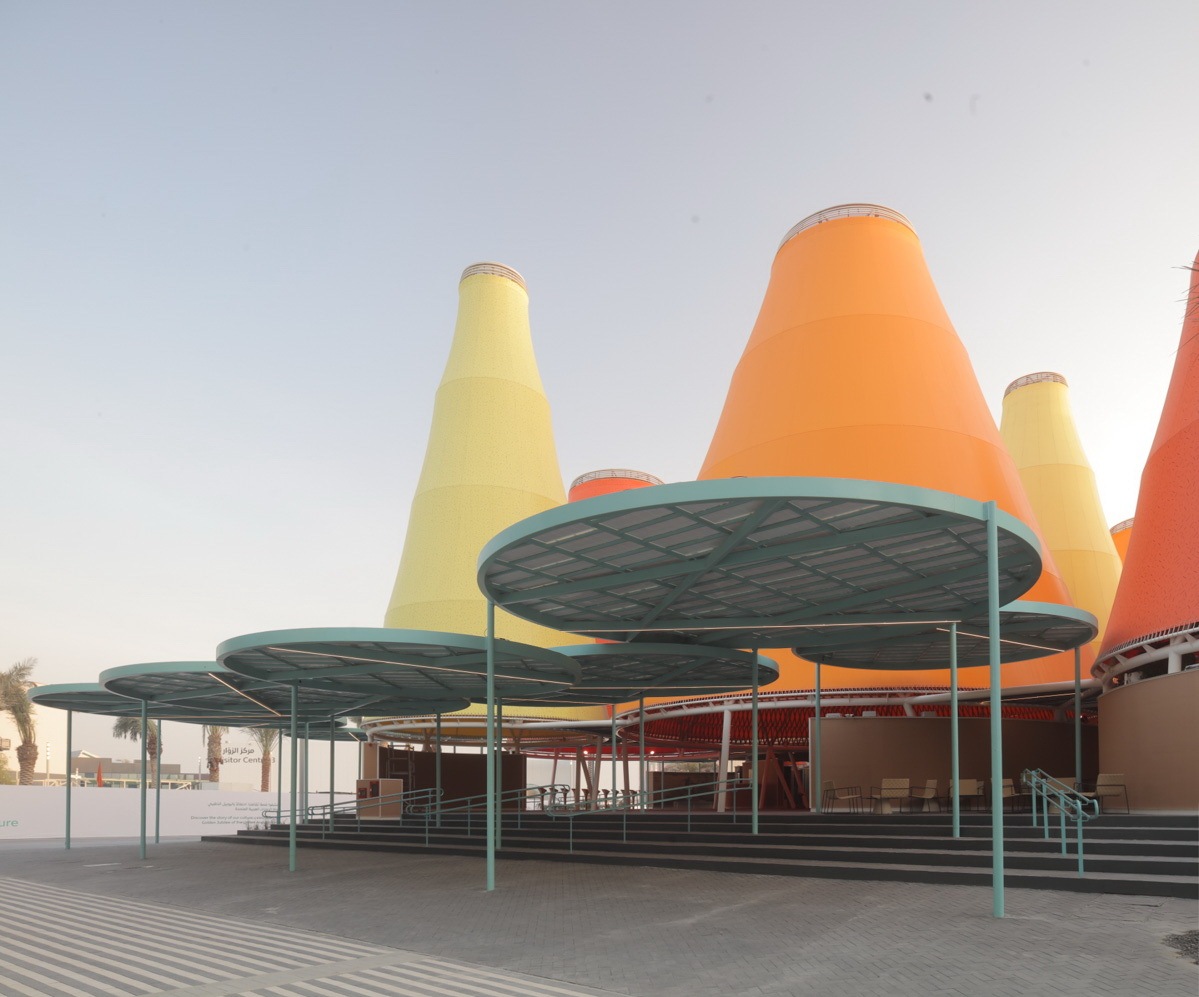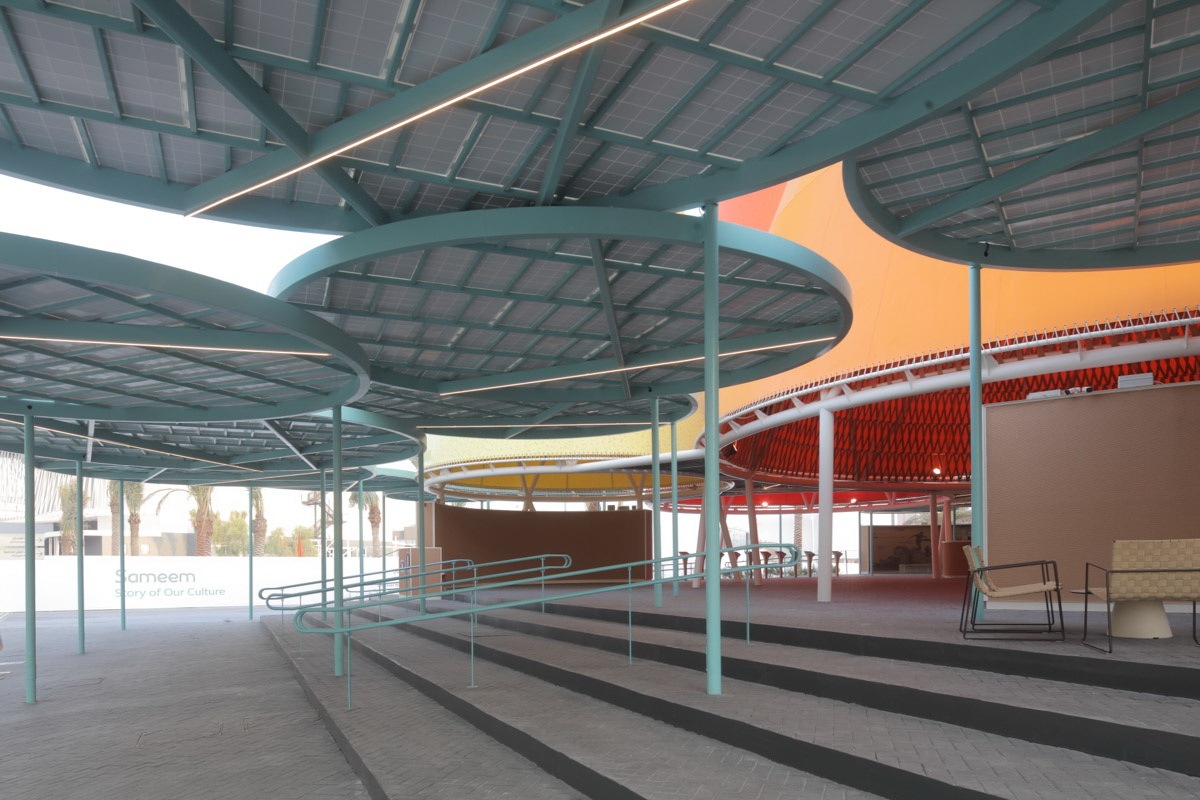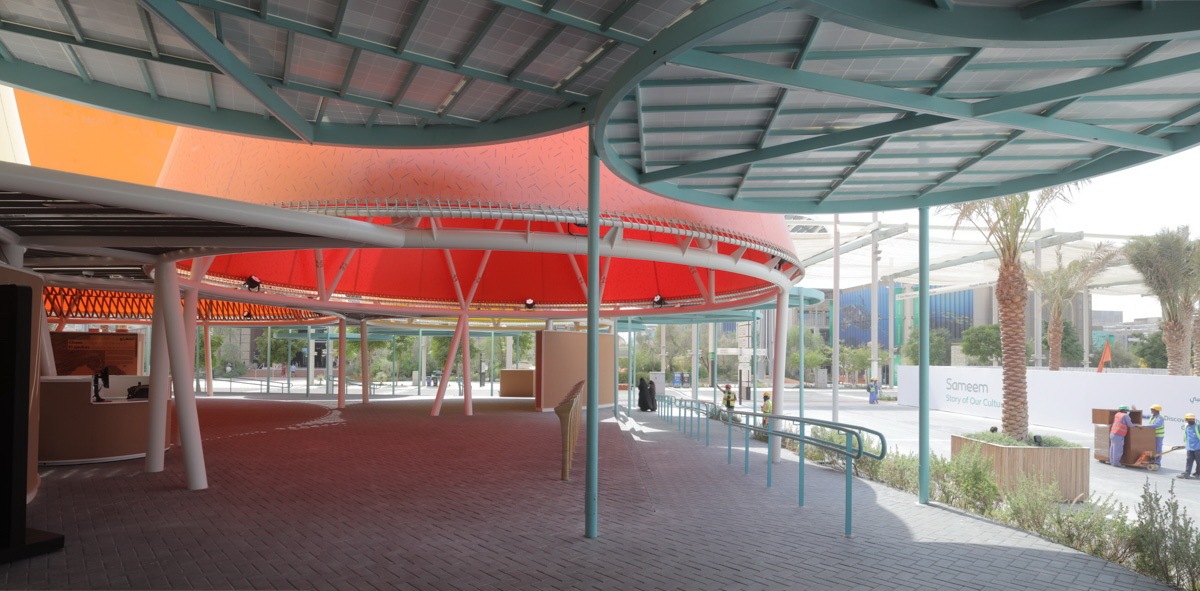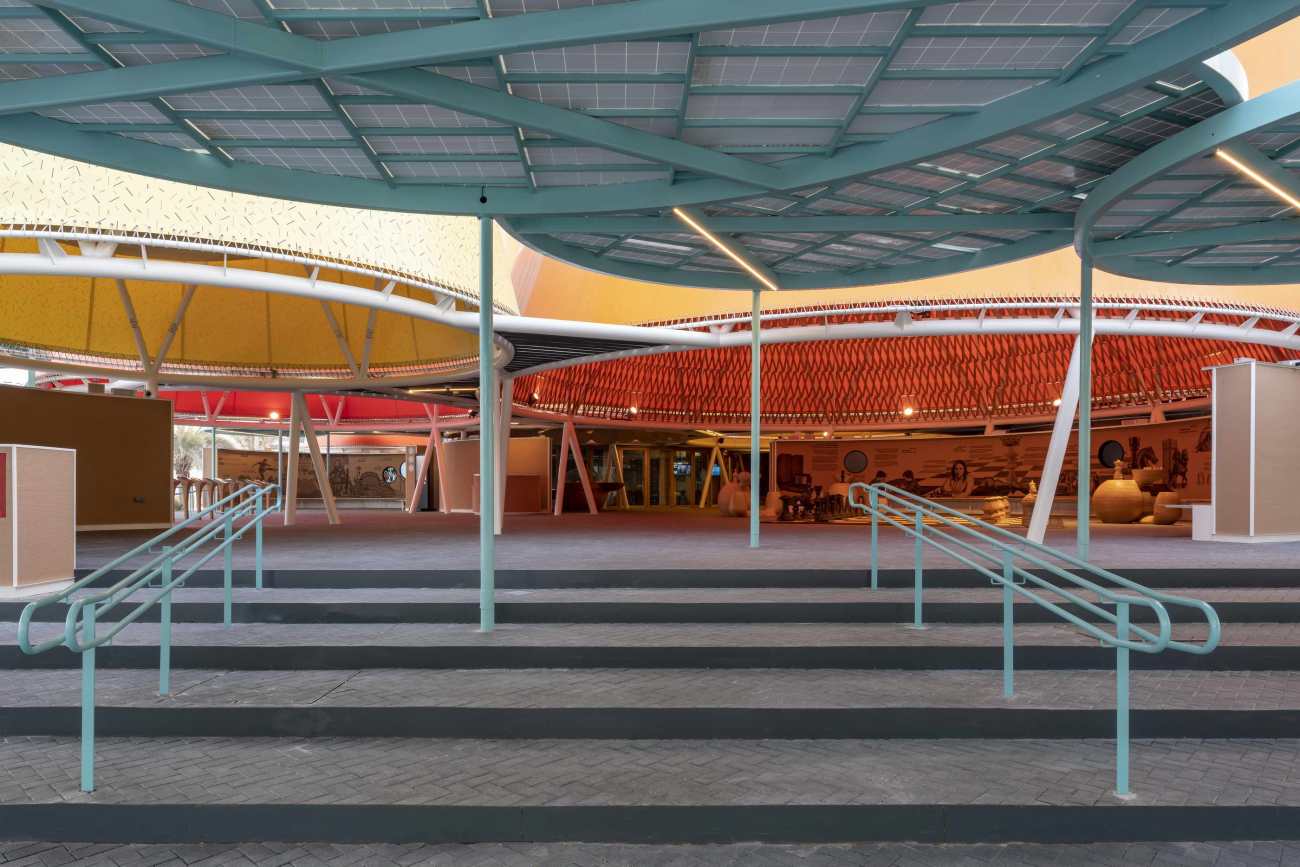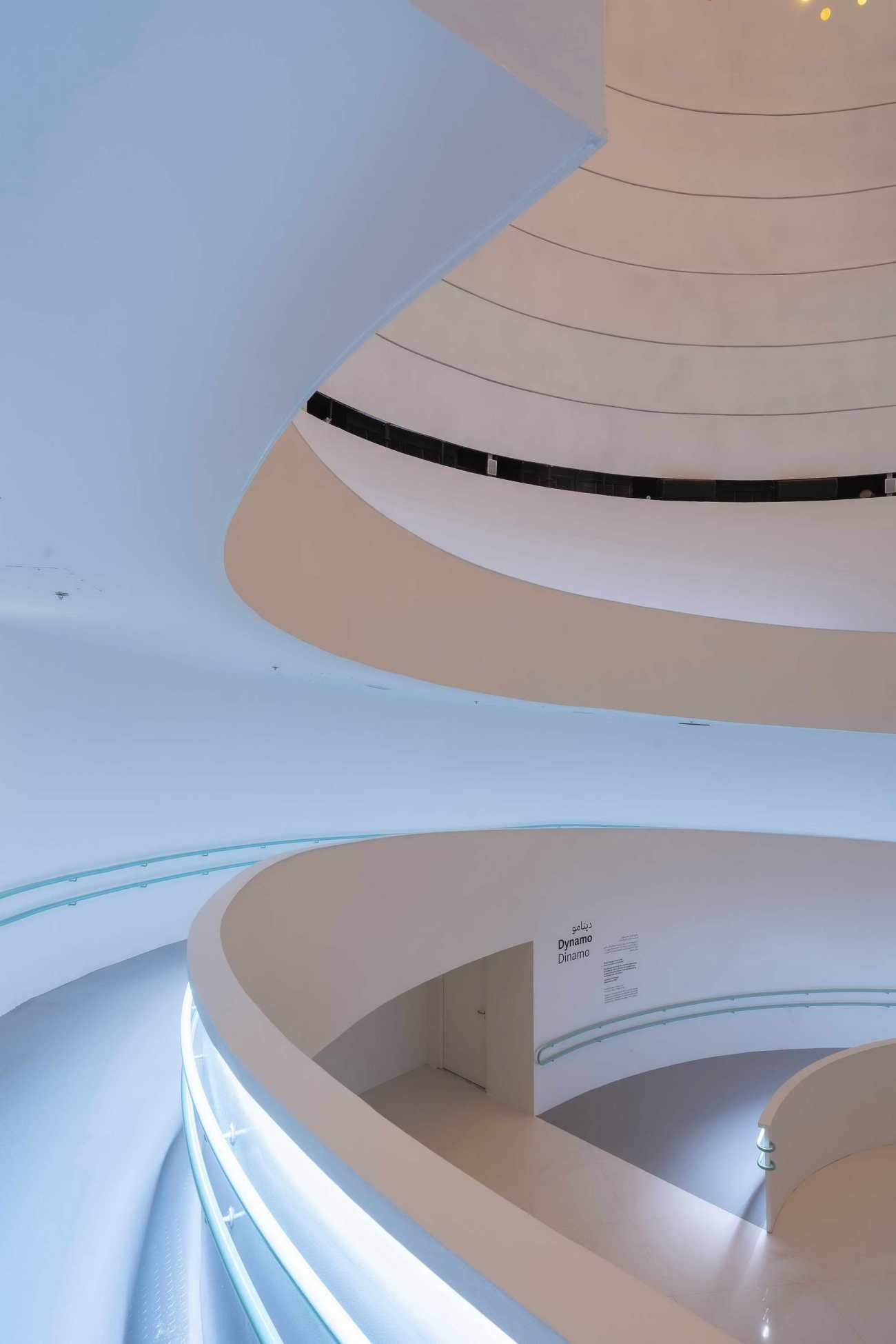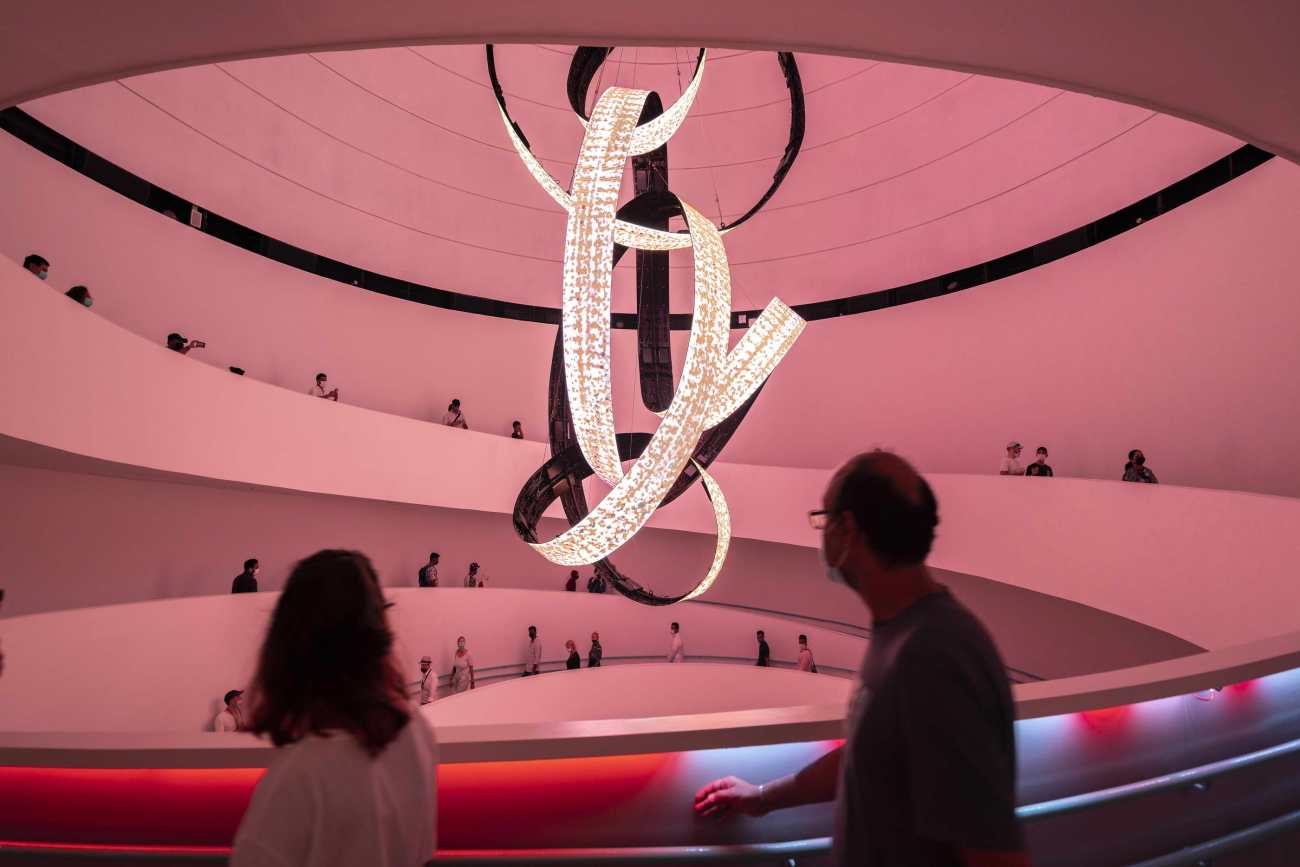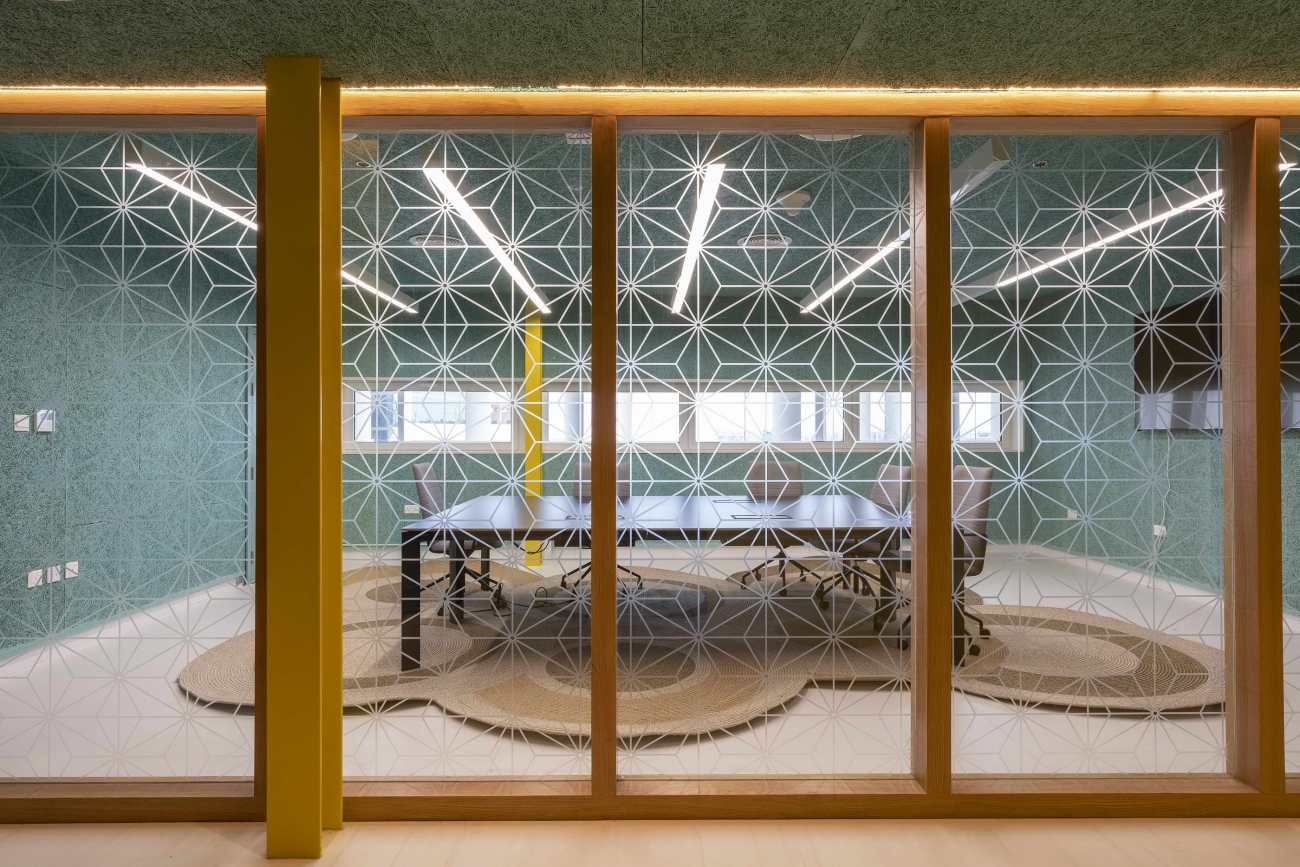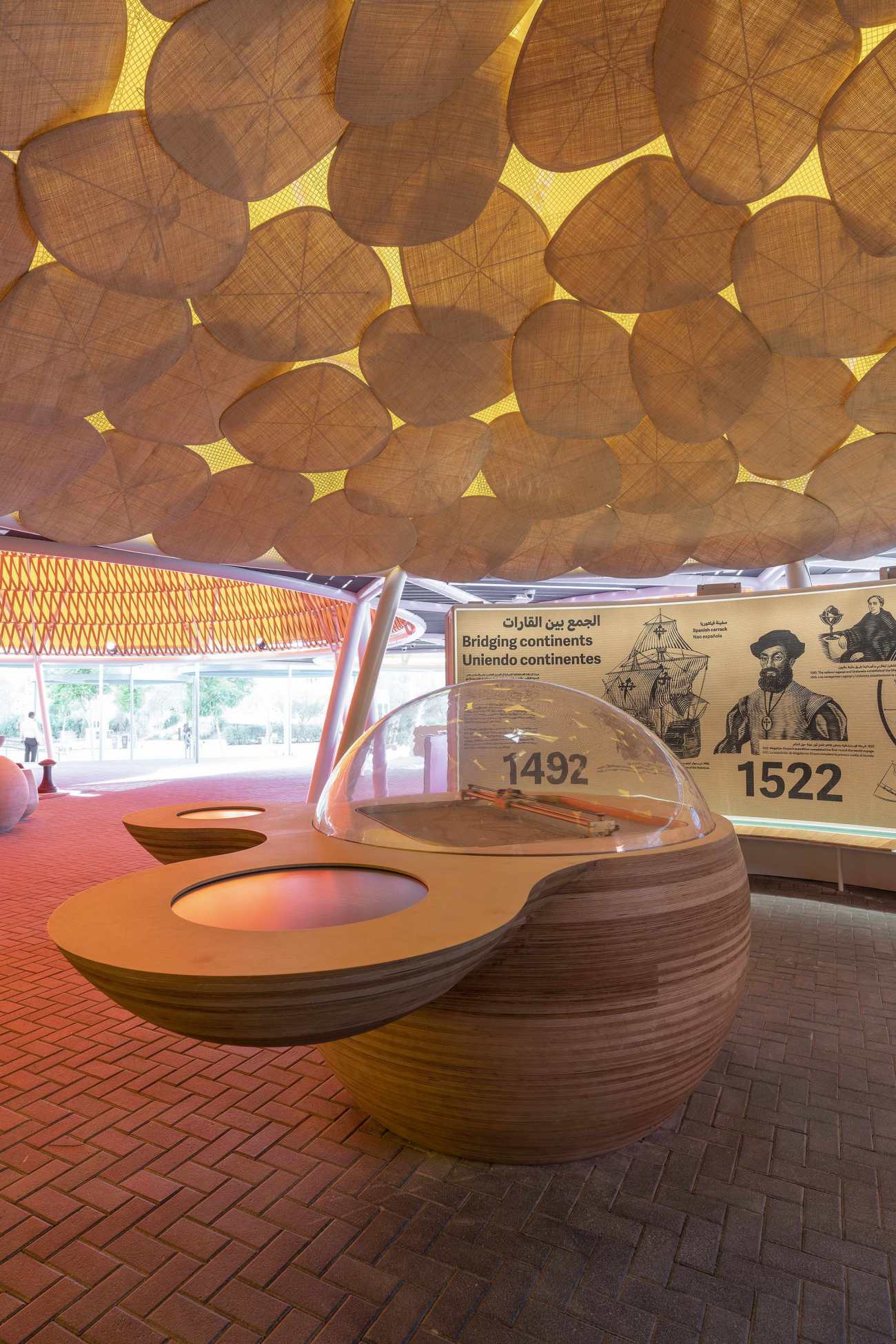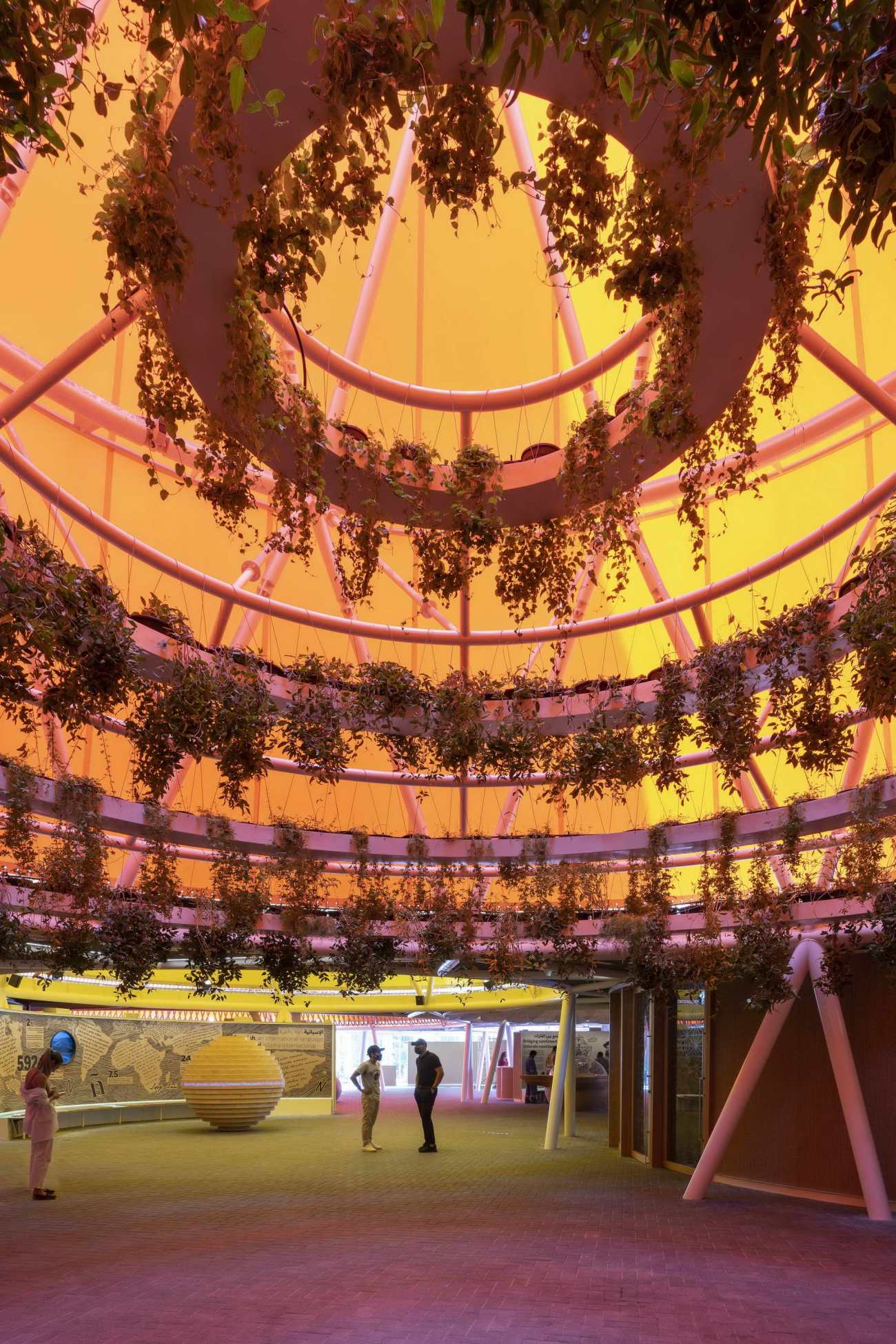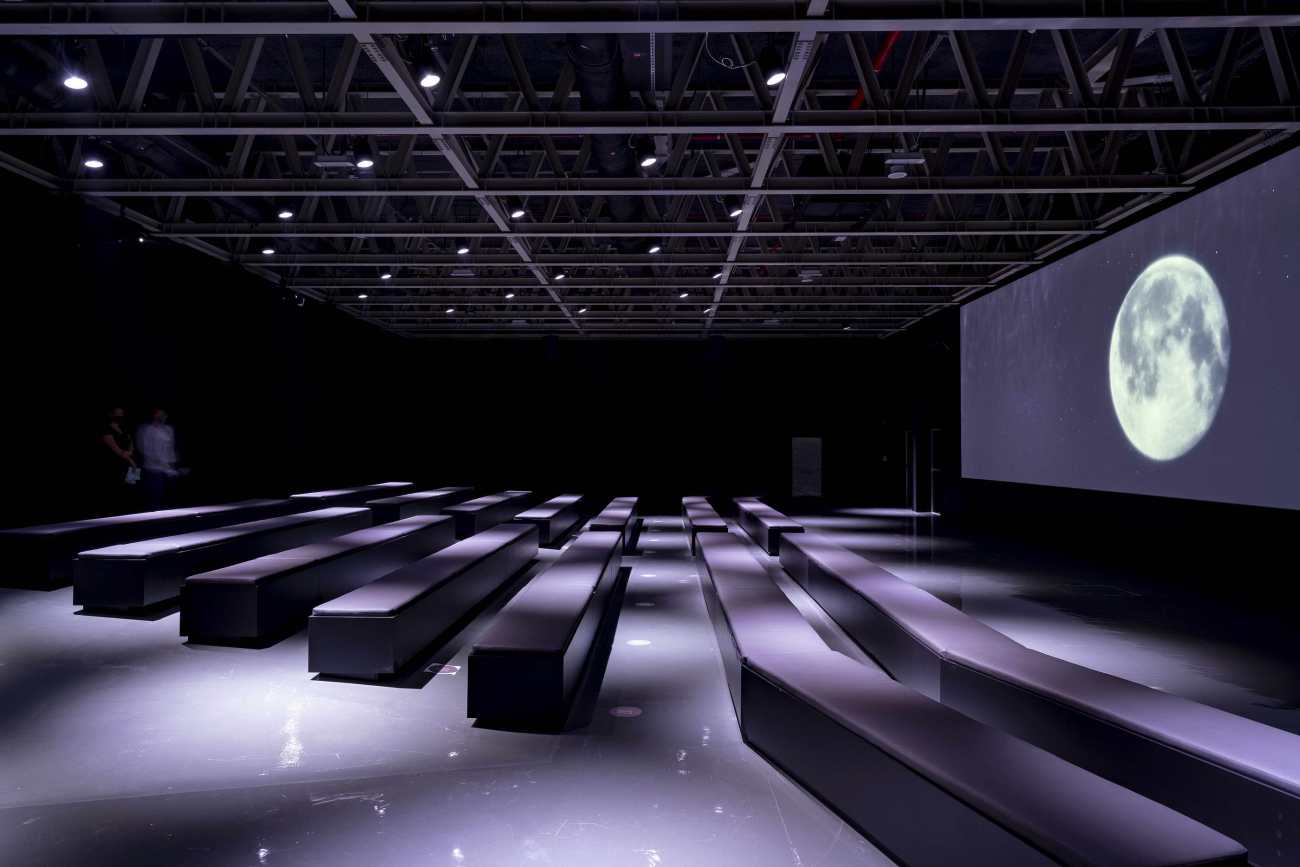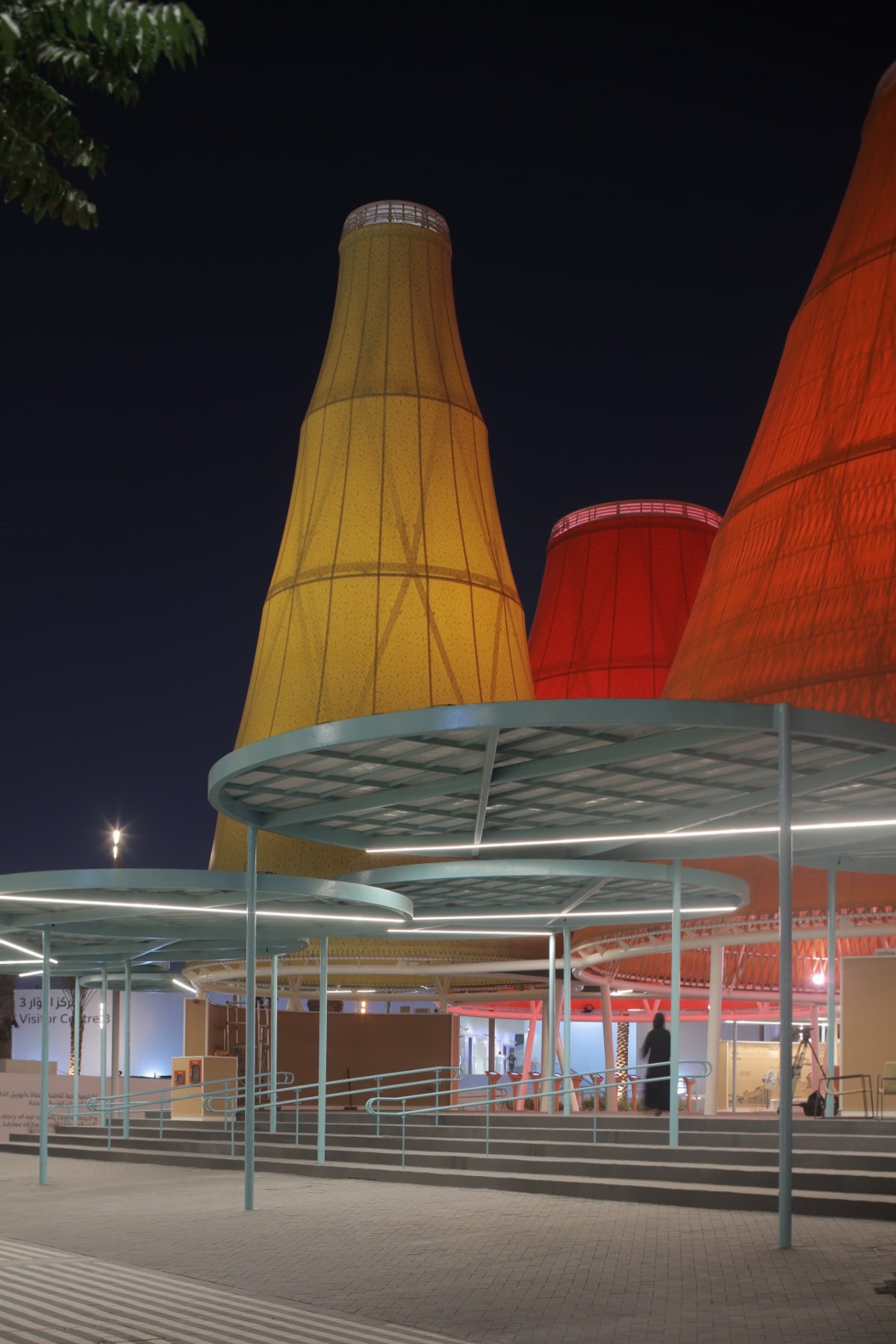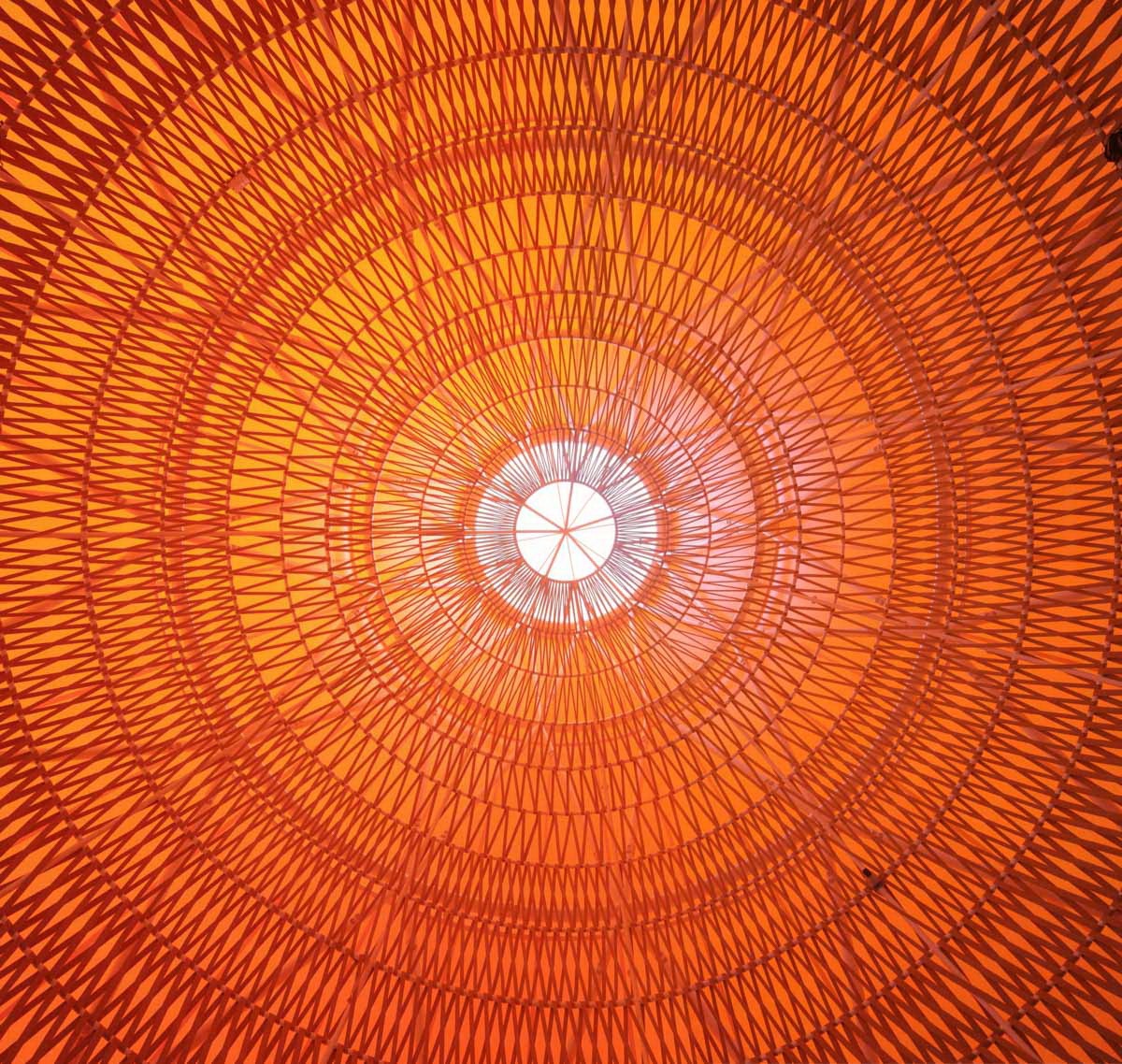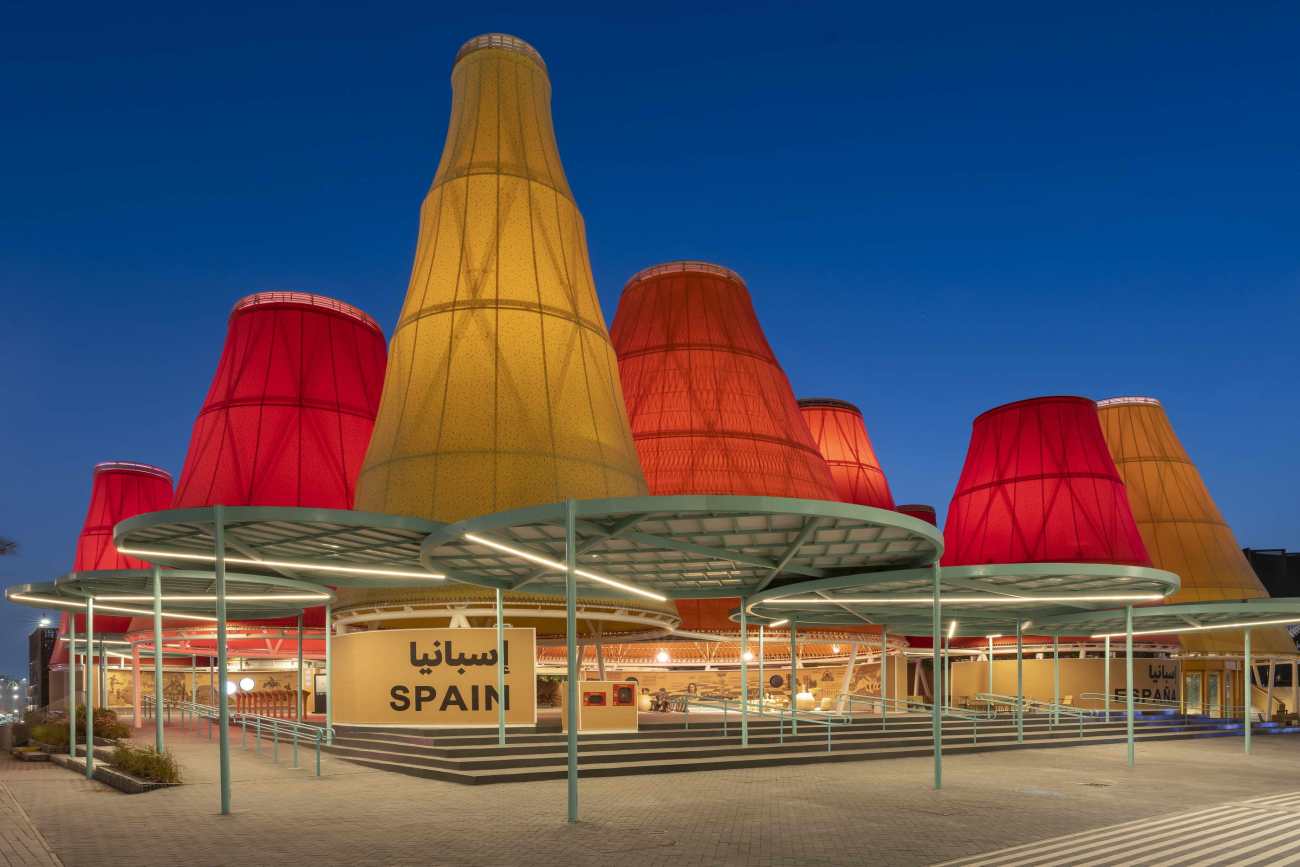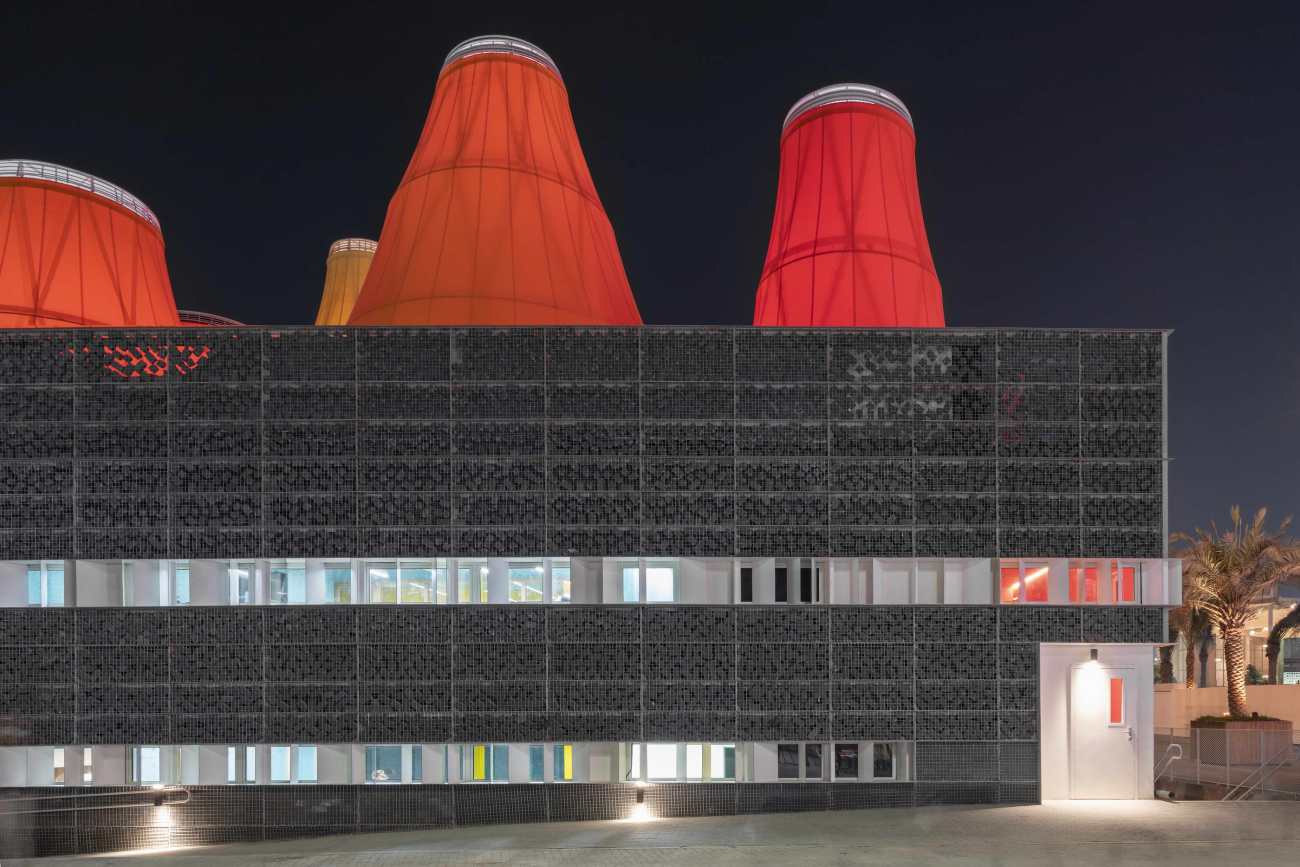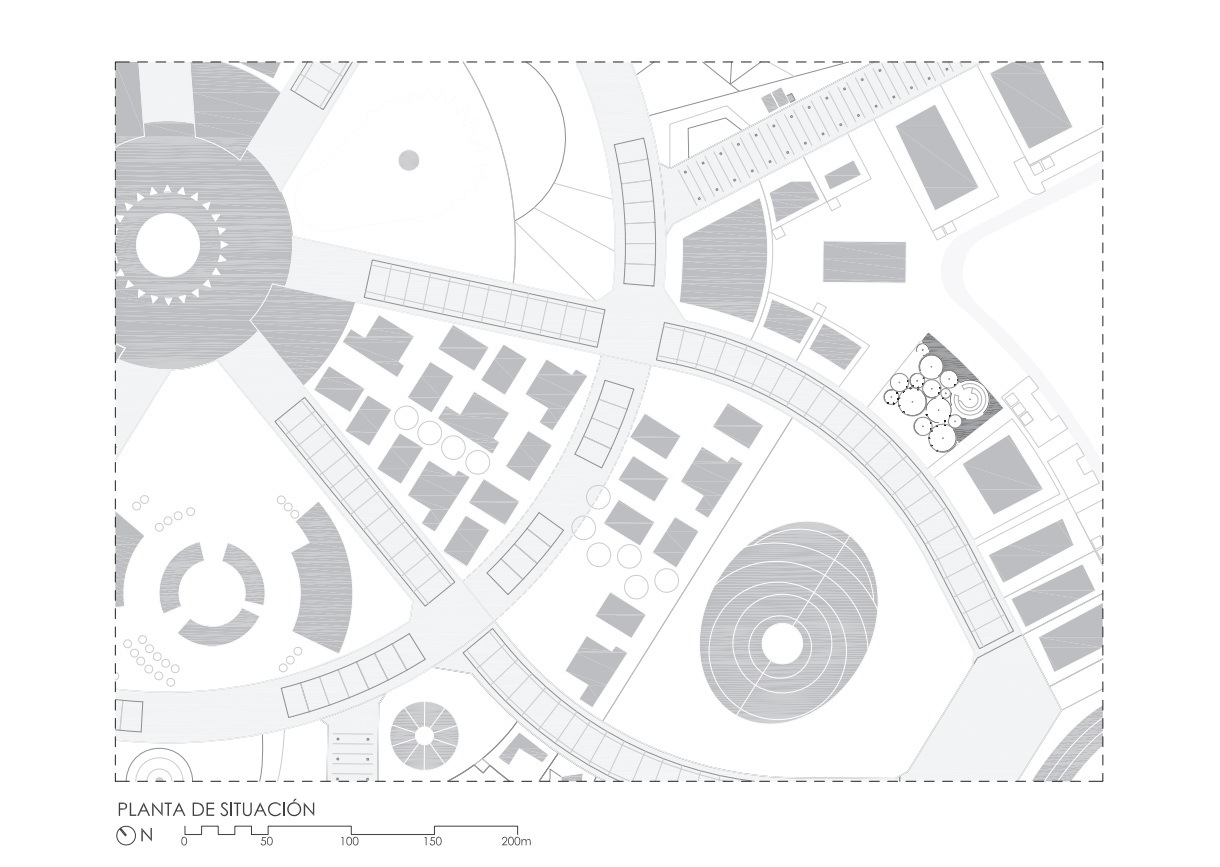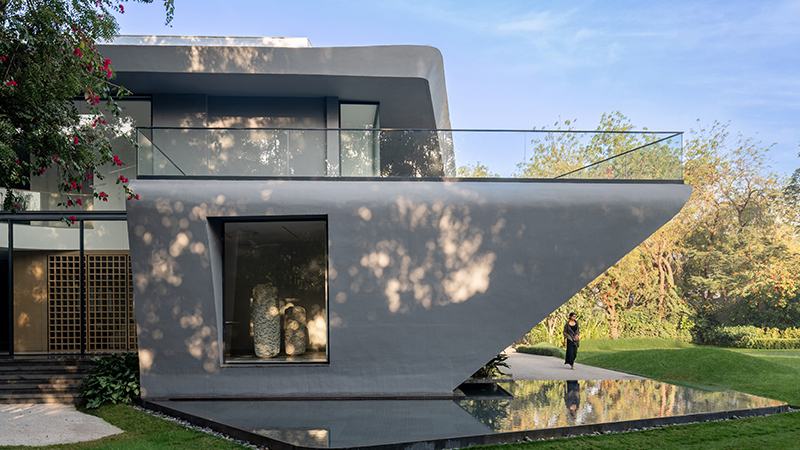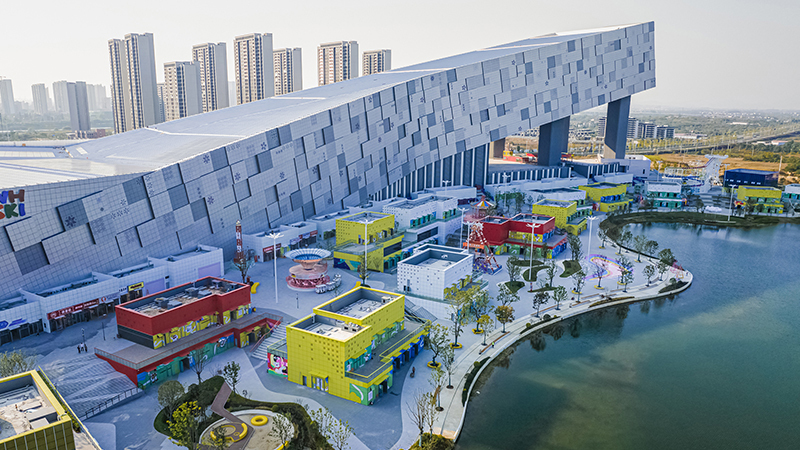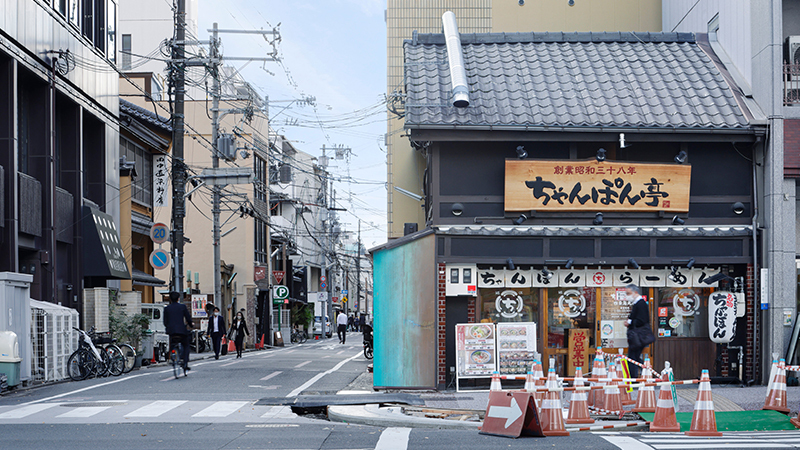| 公司: | Amann Canovas Maruri | 类型: | 建筑 |
|---|---|---|---|
| 地区: | 迪拜 | 标签: | 无 |
在大都市中设计建筑,很容易掉入将其设计为一个大型购物中心的陷阱,换句话说,很容易设计出一种没有风格和特色,仅仅是为商业服务的普通建筑。
It is easy to design an Exhibition Pavilion and for it to turn into a Shopping Center on the outskirts of a large city. In other words, a project without character and subject to the interests of pure commerce.
从这个角度看,展馆设计的难点在于,除去外观的美观体验性,还要为游客创造友好和智能的环境,让人们在身处陌生而巨大的建筑部布局里仍能体会到人类的尊严。
From this point of view, the difficulty of a project like this consists in not losing the focus that instead of pure representation and above de inevitable spectacle it is possible to offer the visitors a friendly and intelligent place in which to take refuge with dignity.
在飞速发展的当今社会里,为人们建立一系列慢节奏的空间是有必要的,在缓慢而又平静的西班牙馆,人们不必急于去接受他们所看到的一切。
Given the overwhelming speed that contemporary society bears, a set of spaces offering place for slowness is not negligible and instead of the rush to assimilate everything we find, it is good that the Spanish Pavilion offers peace, being this one of the challenges.
西班牙馆由一系列相互联系的广场构成,过渡空间使参观者产生了不同的体验,似曾相识的感官场景,时间的也能在此处停留。座位放置在过渡区的阴影处,给人一种有好的体验。西班牙馆采用带有家庭生活记忆的材料建造,营造出美好的家庭生活记忆。以避免展馆变成购物中心或商业中心。
The proposed Pavilion is a sequence of intertwined squares, a concatenation of intermediate spaces, of places that produce diverse experiences in which time seems to recover. After so much walking, it is beautiful to think that the Spanish Pavilion provides seating and shadow. This offer is an act of welcome and friendship. The building therefore isa space that wants to be tangible and friendly, built with evocative materials providing domesticity and not wanting to be a mall or a business center.
▽展馆入口
▽中庭
▽展亭内部
▽地下展厅
展馆是一个开放的空间,采用被动制冷系统,在世博会结束后可以在其他地方重复使用,材料可以轻易地完成回收。
We have built a Pavilion as an open space, cooled by passive systems;a place of places which can be reused in other locations when the expo disappears, with materials that can easily be reused or recycled.
▽展馆顶部细节
因此,西班牙馆将会以一个开放性建筑的姿态,热切欢迎着世界人民的到来
Therefore the building is intended as an open territory offering a warm welcome to everyone.
该往何处寻找展馆的入口呢?答案很明确,从阴影洒下的地方,开始你的旅途。
If someone would ask where the doors of this Pavilion are located, the answer is simple: where the shadow begins.
▽总平面图
▽各层平面图
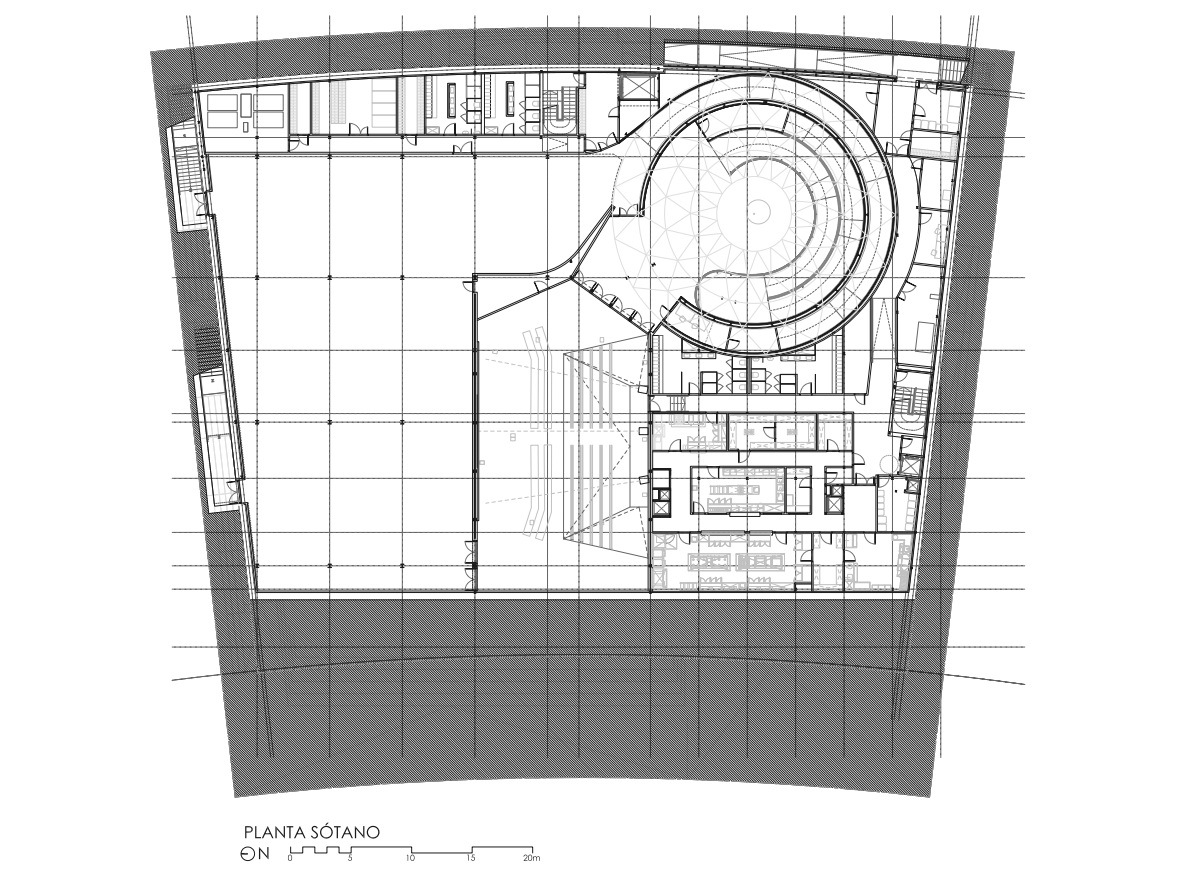 |  | 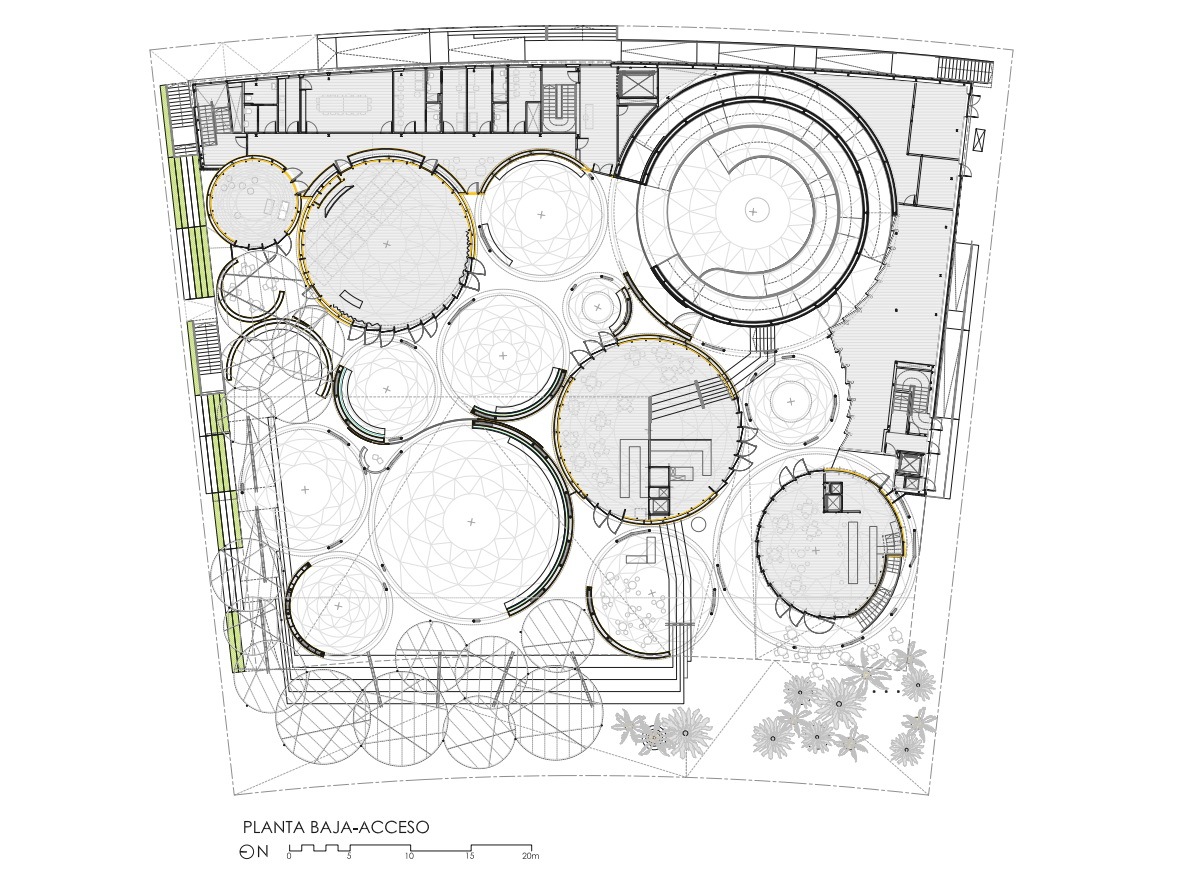 | 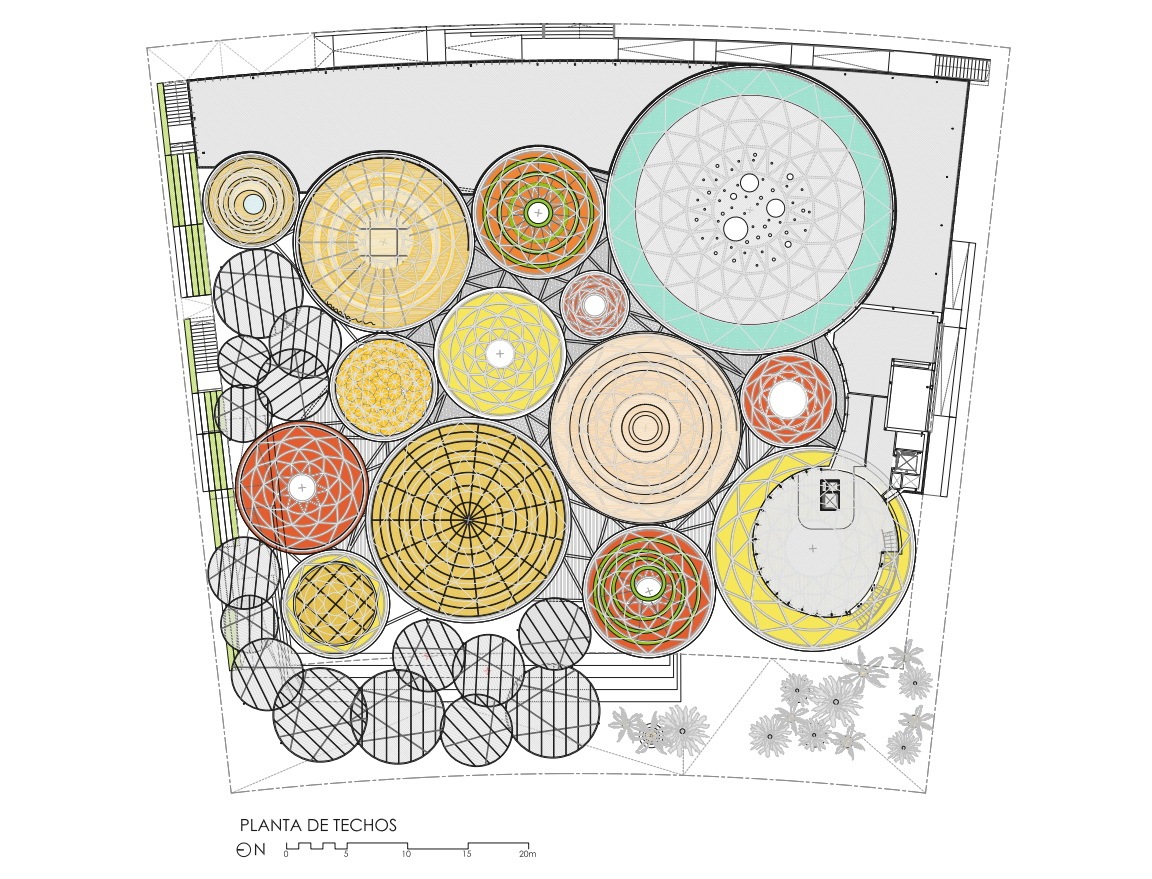 |
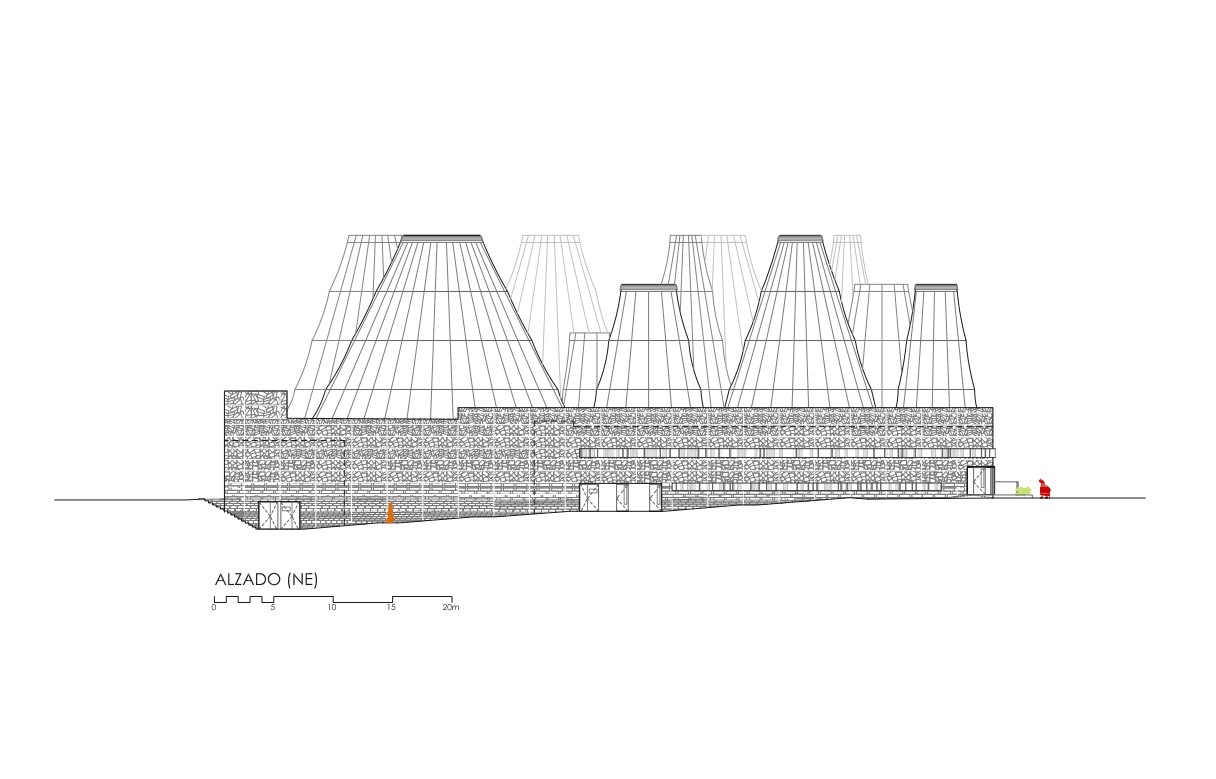 |  | 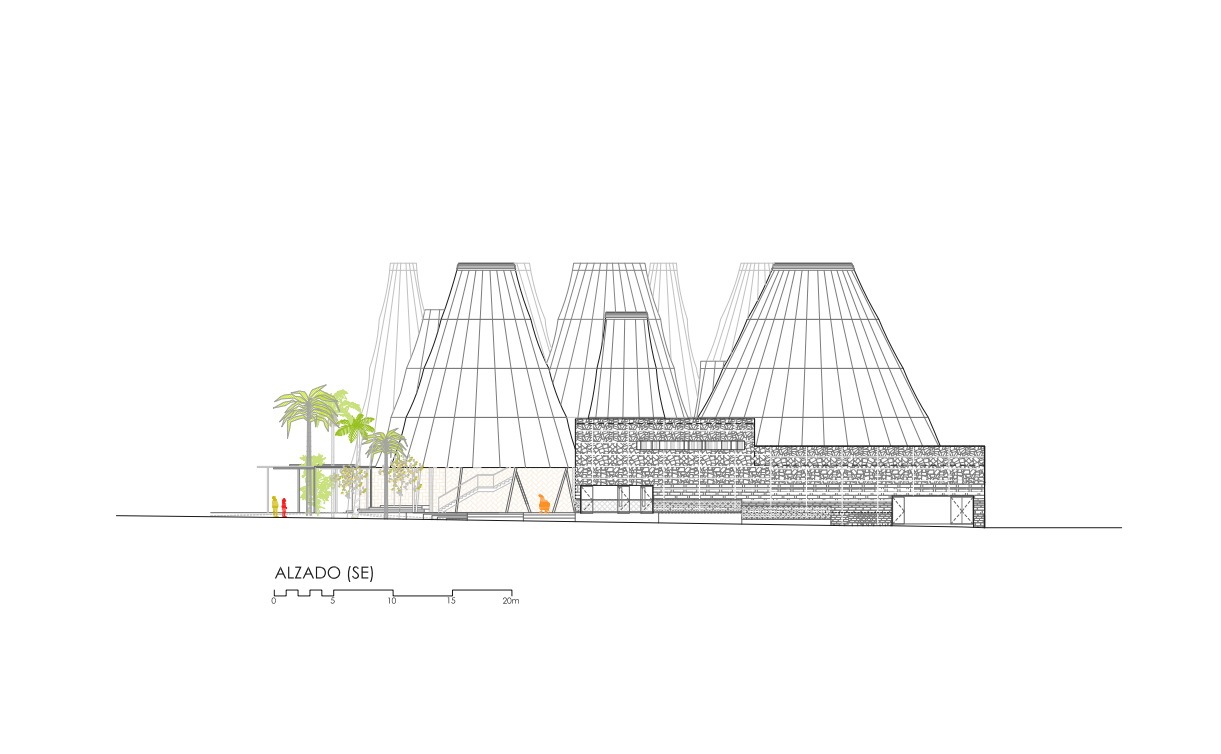 | 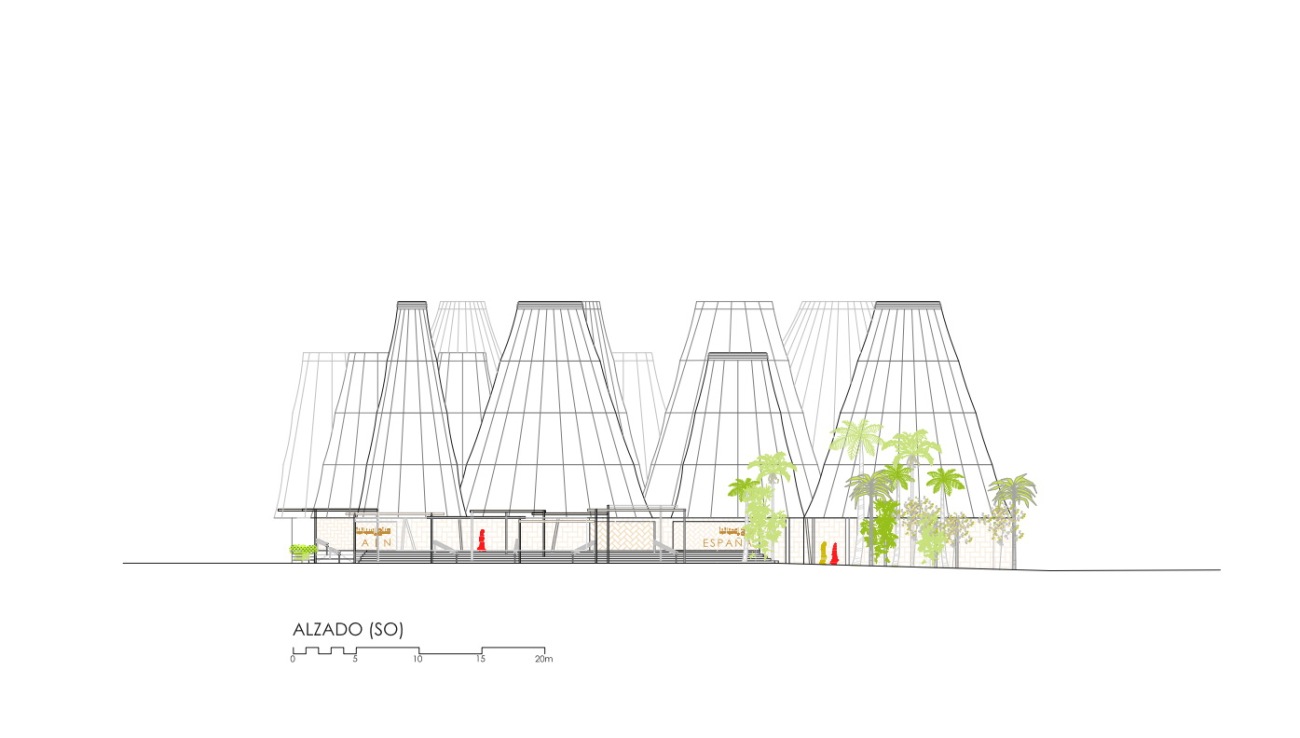 |
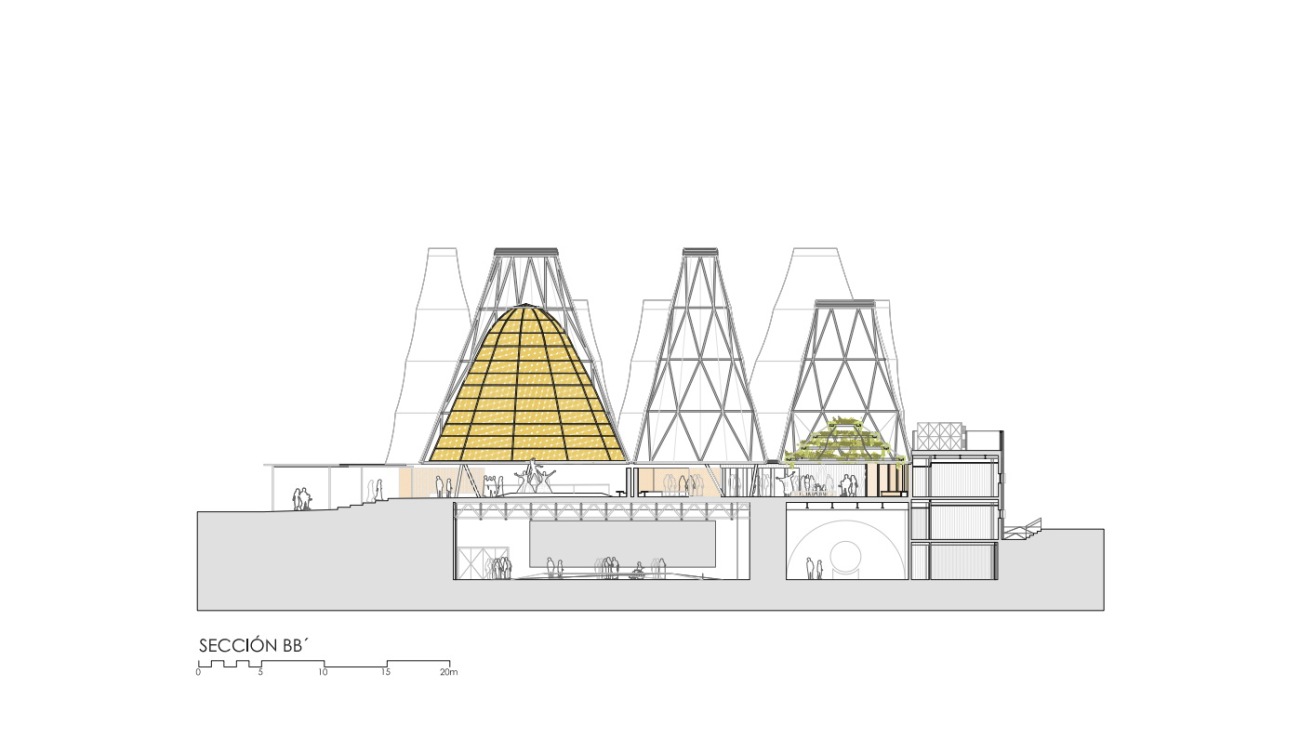 | 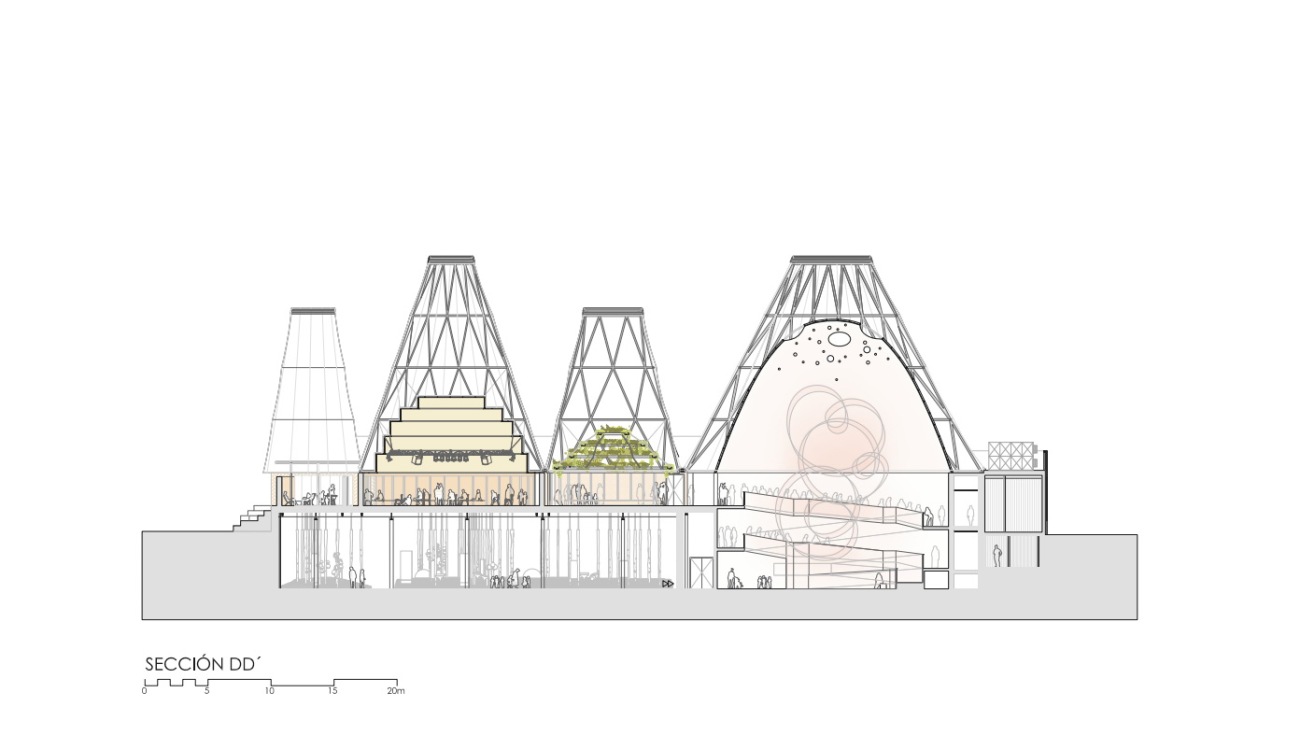 |
 | 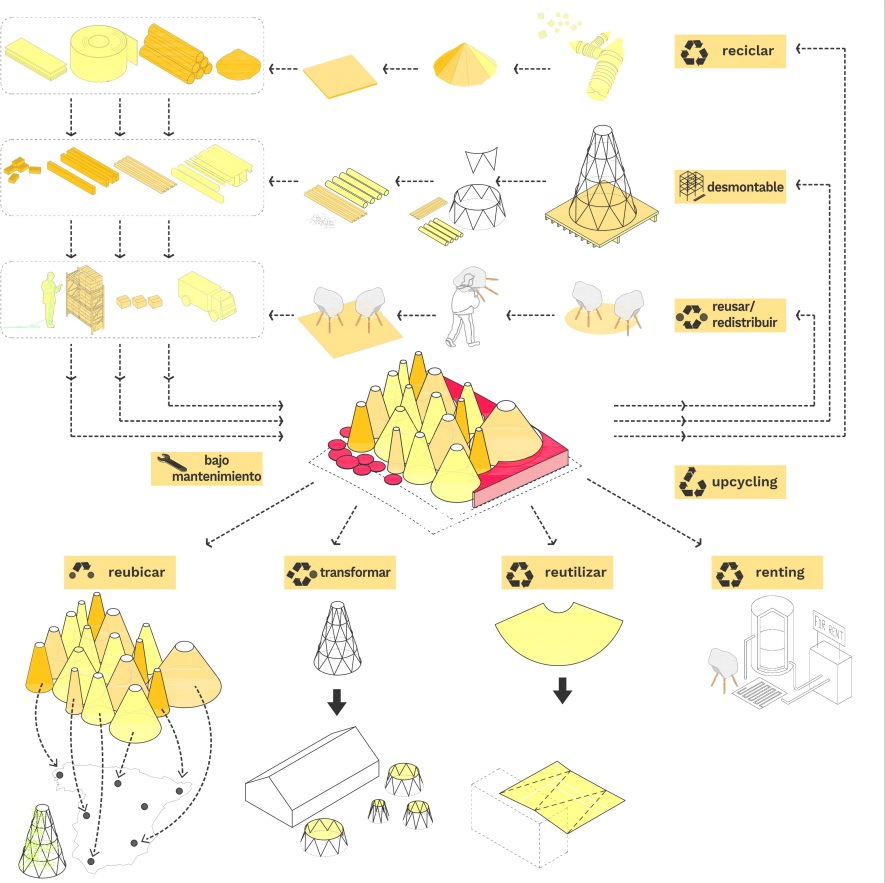 |  | 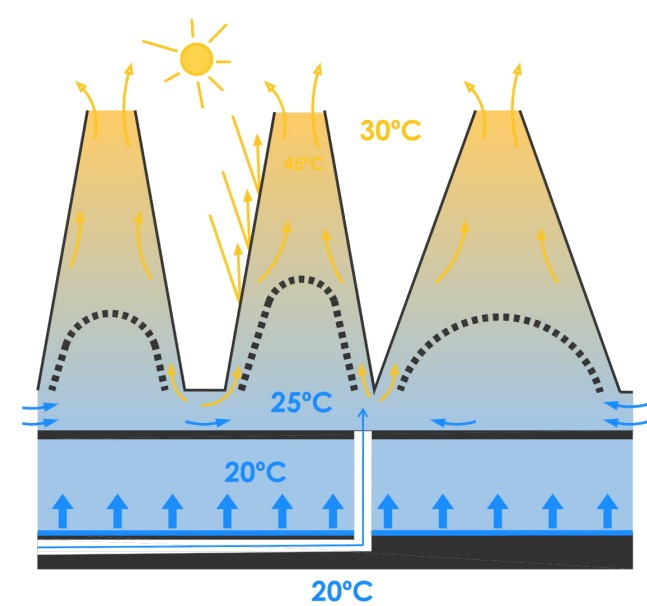 |
ARCHITECTURE:amann-canovas-maruri
PROJECT DIRECTORS:Atxu
Amann Alcocer, Andrés Cánovas Alcaraz, Nicolás Maruri González de Mendoza.
TEAM:Denis Calle Facal,
Pablo Sigüenza Gómez, Joachim Kraft, Borja Aznar Montero, Almudena
Sánchez-Buitrago Morales, David Jiménez Iniesta, Alexandra Torres de Ayala.
SITE MANAGEMENT:Andrés
Cánovas Alcaraz, Nicolás Maruri González de Mendoza, Borja Aznar Montero.
COLLABORATORS:
STRUCTURES:Engineering
Mechanism
FACILITIES:eadAT
Ingenieros
LOCAL STUDIO:WANDERS
WERNER FALASI Consulting Architects
PHOTOGRAPH:Luis
Asín, Adriá Goula
VIDEO:Raquel
Villa Monedero, Borja Aznar Montero.
MODEL:Jesus Sanabria Márquez
(ctrl-X), Almudena Sánchez Buitrago
WIND TUNNEL:Ignacio da Riva Institute of Micrograveda
DATES:
Competition in 2 phases First prize:2018
Project:2018-2019
Construction:2019-2021
CLIENT:Spanish Cultural Action (AC / E)
EXHIBITION:EXTERNAL REFERENCE – ONION LAB
ARTISTIC INTERVENTION:Daniel
Canogar –Francisco López
SHORT:Nacho
Vigalondo
更新日期:2021-10-21 16:49:58
非常感谢 Amann Canovas Maruri 带来的精彩项目, 查阅更多Appreciations towards Amann Canovas Maruri for sharing wonderful work on hhlloo. Click to see more works!
